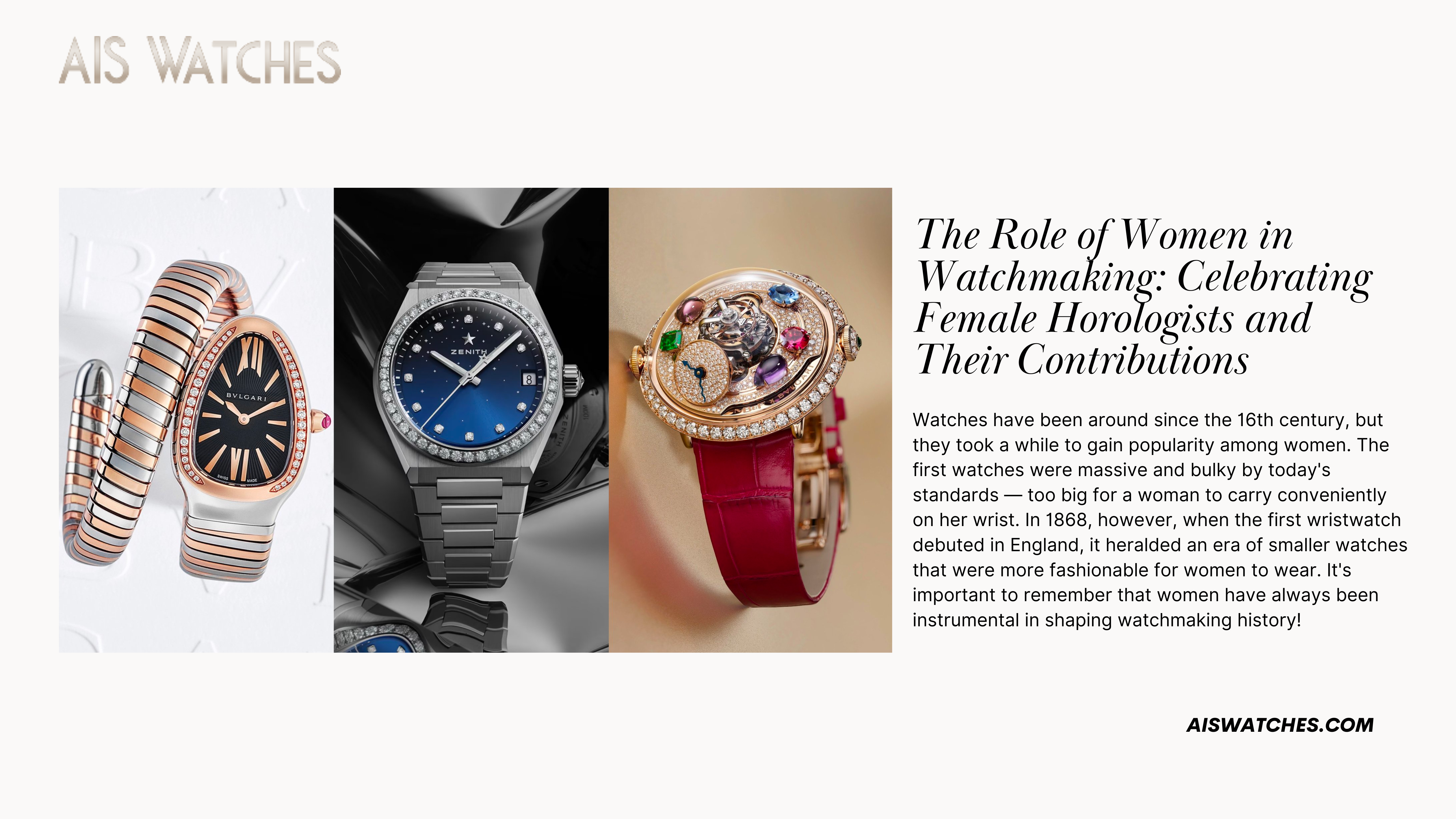The Role of Women in Watchmaking: Celebrating Female Horologists and Their Contributions
Posted by AIS Watches on Mar 16th 2023
Watches have been around since the 16th century, but they took a while to gain popularity among women. The first watches were massive and bulky by today's standards — too big for a woman to carry conveniently on her wrist. In 1868, however, when the first wristwatch debuted in England, it heralded an era of smaller watches that were more fashionable for women to wear. It's important to remember that women have always been instrumental in shaping watchmaking history!

As the first wristwatch debuted in England in 1868, women took notice and began purchasing styles they deemed fashionable. The watch was hallmarked by its relatively small size and convenience (it could be worn while doing domestic chores), but it also signaled a shift in gender roles that would continue throughout the history of horology.
In addition to effecting changes in fashion trends, women have played an integral role in designing watches themselves--from creating their own timepieces or contributing ideas for new models through consultation with manufacturers at all levels of production.
“Ladies’ Watches,” advertisement in The London Times, January 28 and February 1, 1868
The advertisement was published in The London Times, January 28 and February 1, 1868. It read: This watch is made by a company called “Ladies' Watches” and was advertised as being “the smallest Watch ever made.”
Men's pocket watches were too large for women to carry conveniently on a chain at their waistline. A watch could be attached to a bracelet or brooch, but this also meant that it was less practical; it was easy for the chain to get caught in other items of clothing or jewelry.
Women's fashion was more practical than men's. The fashions of the time included pockets, which were not part of men's attire. For this reason, women generally preferred wristwatches over pocket watches because they were more convenient and fashionable. Wristwatches could be worn with any outfit that included a pocket, such as dresses or blouses; but in order to wear them with suits (which lacked pockets), it would have been necessary for women who wanted to wear them with their work clothes to either sew one onto their blouse or wear a special vest with multiple compartments built into it--and even then they'd still need another accessory like a brooch or scarf in order to keep the watch securely attached during normal activities such as walking around town shopping at stores like Macy's department store!
When the first wristwatch debuted in England in 1868, it was hallmarked by its relatively small size and convenience.
While pocket watches were still popular at the time, people were excited about this new trend of wearing a watch on their wrists.
The modern woman's wristwatch has come a long way since then--with many different styles available today that can suit any taste or budget. But there are still plenty of women who prefer their traditional styles over others because they appreciate their history and tradition as well as their functionality!
Women took note of the new trend quickly and began purchasing styles they deemed fashionable.
Women were the first to purchase wristwatches and wear them in public. In fact, it was only after women began wearing wristwatches that men began to follow suit. This is because women were ahead of their time when it came to fashion and style, so they could see what was coming before anyone else.
It's important to remember that women have always been instrumental in shaping watchmaking history!
In fact, the first recorded watchmaker was a woman named Margaretha Hauttener. She built her first clock in 1510 and was recognized by Emperor Maximilian I as one of his best craftsmen. It's no wonder that many consider her "the mother of modern horology."
But how could she know so much about watches if she wasn't allowed to learn? Well, it turns out that most people didn't understand how watches worked at the time--even men who were supposed experts on this subject! In fact, many people thought they were magical objects that could predict future events or even tell time without any help at all (just like some people today). The history of watchmaking is a fascinating one, and it's important to remember that women have always been instrumental in shaping its trajectory. From their early involvement in crafting timepieces to today's high-tech smartwatches, women have played an integral role in shaping the industry we know today.
 Menu
Menu




